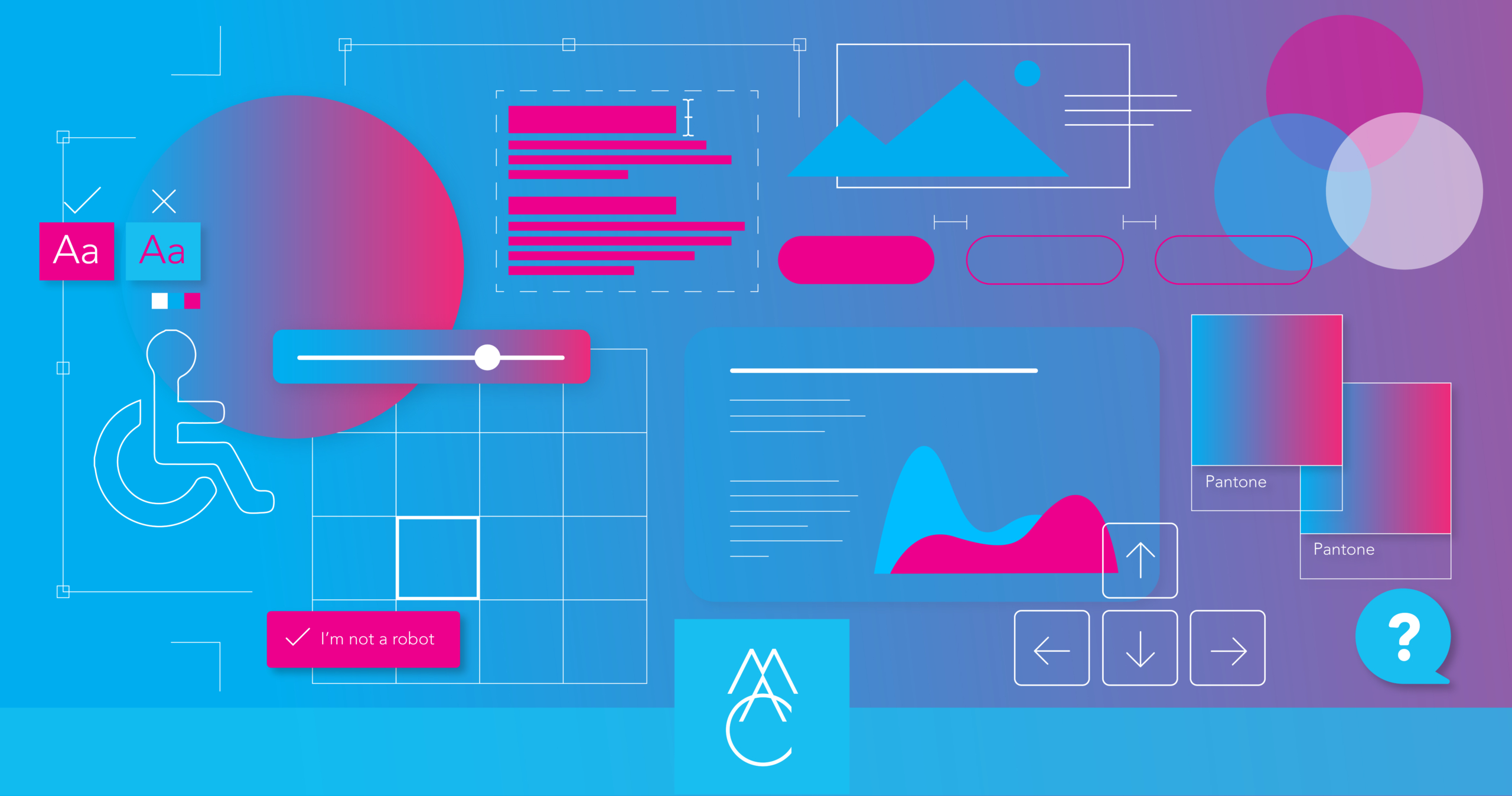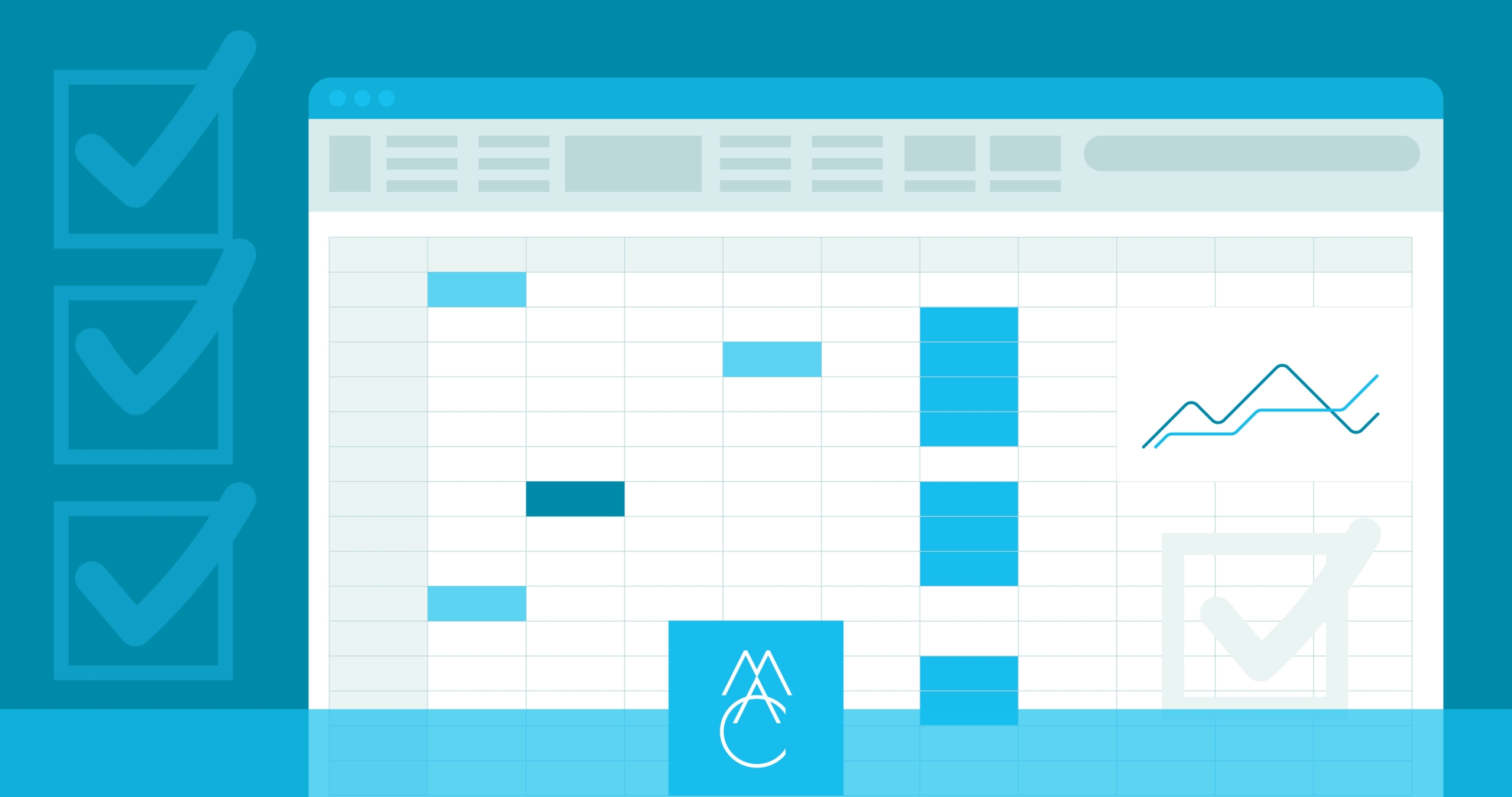
Your game plan for a winning website: 8 key elements of a content strategy
You wouldn’t launch a business without a plan. Likewise, launching a website without a strategy will leave you with a site that sends prospective customers running for the hills.
A web content strategy is essential for creating a site that helps you meet your business goals. And, your most valuable players will benefit.
- Your audience can find what they need and get their questions answered quickly.
- Your team will know what they are responsible for and who is involved.
The following outlines key elements of a content strategy and provides actionable steps for you to implement. If we were in math class, we’d say these are your order of operations.
Element 1: content strategy goals and mission statement
Address how your website will help you achieve business goals. These site-level goals will guarantee each ensuing decision supports your organization.
Abound, a client of the MAC, provides guidance on schools across the US. Its goals include serving a previously untapped audience (adult students) and positioning themselves as a leader in the college guidance market. These goals directly dictate the site’s functionality and design.
Tied to your goals, your content mission statement steers audience-focused content.
The Content Marketing Institute offers a great template:
- [Our company] is the place where [our audience] gets [what information] that offers [what benefit].
Abound’s content mission statement is:
- Abound is the place where adults pursuing bachelor’s or graduate degrees find expert advice on college selection and admissions. Abound’s goal is to help students find the right school.
Action step: Outline your goals and fill out the content mission statement template.
Element 2: Conduct an audience analysis
Knowing our audience’s needs, wants and desires is essential. This detailed understanding is key to providing them with helpful information. The more helpful you are, the more likely they are to reciprocate by subscribing/purchasing/etc.
This process, officially called persona development, is tightly woven into the MAC’s Discovery method. Asking key questions on the front-end helps ensure your audience is effectively and efficiently targeted.
Action step: Ask the audience.
The questions you ask will slightly differ depending on if you’re targeting organizations or individual consumers, but here are a few ideas to get you started:
- What do they need? What pain points and concerns would prevent them from taking the next step? Who influences their decisions? Are they the ultimate decision maker? What motivates them to make a purchase?
Element 3: Messaging matters
Now that you’re in tune with your audience, how will you craft messaging to inspire action? What voice and tone will resonate?
Remember, how you speak to your customers is not necessarily how you want to be spoken to.
Action step: Create a brief guide outlining your messaging standards. Don’t pull your hair out; just jot down your approach on paper (or Google Doc) so any member of your team can write copy with your voice. MailChimp has a phenomenal example.
Element 4: Determine web features
Before you jump into what your website will look like (don’t worry, you’ll get there), consider what features and capabilities need to be integrated. Examples include email signups, calendars, ability to buy a product or make a donation, lead capturing, and responsive display.
Going back to Abound, its site needed to house thousands of colleges and their unique offerings. The solution: a custom database enabling users to filter schools by college, program, class type, location and more.
Action step: Compile a big wish list of features. Then, prioritize the features that are most critical for when your website launches.
Element 5: Get organized with an information architecture
Don’t let the phrase “information architecture” scare you. We’re not asking you to pull out your protractor.
If it helps, think of information architecture as an outline or site map illustrating your content and navigation. You must consider your target audience, features and data comprising your website.
Gather a team of designers and content strategists for this step. If you are stuck, ask the experts.
Action step: List out all your possible pages, how they will link, and what they will be called.
Element 6: Conduct a content inventory and audit
Your information architecture serves as your guide for content and copywriting. So, what do you have and what will you need to create?
Take inventory of what content you have to work with. This content could live onsite or offsite.
Next, carefully audit what you’ve collected. Is this quality content? Is the messaging on-brand? Will it meet audience needs?
Action step: Review your inventory and evaluate the quality.
Element 7: Plan your web content
Now you can select appropriate topics to address customer needs and fill in content gaps.
All content topics you produce need to serve a purpose, whether it’s entertaining, informational, helpful, or some combination. This purpose should be directly tied to your marketing funnel.
For instance, an infographic linking to a landing page serves prospects at the top of the funnel or awareness phase. An informational webinar, demonstrating how you solve a problem, belongs in the middle of the funnel.
Finding the sweet spot between topic, content type, and buyer’s journey ensures your content is intentional and drives site visitors through your marketing funnel.
But how will a prospect find your content? Introducing, content hubs.
Your topics, or keywords, should form content hubs. Developing hubs means your site is meaningful for visitors and is search friendly.
Action steps:
Identify your key topics and affiliated keywords. Here is a SEO guide to get you started.
Plan out what types of content (landing pages, blog posts, videos, ebooks, photography, etc.) you will produce to support your topics and marketing funnel.
If needed, go back and adjust the information architecture to sync with the new content you are planning.
Element 8: Determine ownership
By now, you have a solid plan of what you will create and where it will go on your website. But, who is going to create all this wonderful, actionable content…and when?
This is where ownership comes in. Establishing ownership is essential for well-managed content that builds a strong brand image.
Web design and development is a multidisciplinary practice. Delineate who is responsible for content creation, production, distribution, and maintenance.
Establish your workflows — who is responsible for each step, and the order of those steps.
Also falling under the ownership umbrella are brand standards and messaging guides. You want your audience to know your content is your organization’s just by the way it looks or sounds.
Action step: Create two documents. One is a working document specifying your brand and messaging standards. (If you followed this outline, you should already have your messaging standards ready to go.) Another is your editorial calendar specifying what, when, where, and who.
Put the elements of a content strategy to work
To avoid random acts of content and a bloated website, gather your team — and web strategists — and start creating your web content strategy.
The purpose of creating a plan is to transform the experience for your team and your audience. The result: a website that helps you meet your business goals.
This article is also published on Medium.
More Resources
-

Article
WCAG 2.2 Guidelines - What's NewThe Web Content Accessibility Guidelines (WCAG) exist to help web developers and the organizations they serve to be as inclusive...
-

Article
Creating a Gen Z-Friendly College Experience (and Website)Generation “Z”, born between 1997 and 2012, spent their formative years with a world of information at their fingertips. As...
-

Worksheet
How to track success on your website projectDetermine your metrics, track, and analyze throughout the project with this useful worksheet template.




